The title bar and all other window decorations (maximize, minimize and restore buttons and any edges to the window) are owned and managed by the window manager. Tk has to ask the window manager to do anything with them which is why setting the application title is a wm_title() call. By setting the overrideredirect flag you have requested the window manage to stop decorating your window entirely and you are now faking a titlebar in the client area of your window using a frame.
My advice would be to stop fighting the system. Thats what window manager themes are for and Windows doesn't let you mess with those really. If you really do still want to go this route you can create the windows frame decorations as Ttk theming elements as they are part of the current styling collection and can be created using the vsapi ttk element engine. Some values from the Visual Styles API:
| Function | Class | ID | Numerical ID |
+-------------+---------+------------------+--------------+
| Minimize | WINDOW | WP_MINBUTTON | 15 |
| Maximize | WINDOW | WP_MAXBUTTON | 17 |
| Close | WINDOW | WP_CLOSEBUTTON | 18 |
| Restore | WINDOW | WP_RESTOREBUTTON | 21 |
I've used these in python like this to get a closebutton element you can then include in a ttk widget style.
style = ttk.Style()
# There seems to be some argument parsing bug in tkinter.ttk so cheat and eval
# the raw Tcl code to add the vsapi element for a pin.
root.eval('''ttk::style element create closebutton vsapi WINDOW 18 {
{pressed !selected} 3
{active !selected} 2
{pressed selected} 6
{active selected} 5
{selected} 4
{} 1
}''')
However, I suspect you probably still want to avoid the themed nature of these buttons so you will more likely want to just use a png image and use a canvas instead of a frame. Then you can use a tag binding to pick up events on the pseudo-titlebar buttons easily.
Example using ttk theme elements
#!/usr/bin/env python3
"""
Q: Trouble making a custom title bar in Tkinter
https://stackoverflow.com/q/49621671/291641
"""
import tkinter as tk
import tkinter.ttk as ttk
from ctypes import windll
GWL_EXSTYLE=-20
WS_EX_APPWINDOW=0x00040000
WS_EX_TOOLWINDOW=0x00000080
def set_appwindow(root):
"""Change the window flags to allow an overrideredirect window to be
shown on the taskbar.
(See https://stackoverflow.com/a/30819099/291641)
"""
hwnd = windll.user32.GetParent(root.winfo_id())
style = windll.user32.GetWindowLongPtrW(hwnd, GWL_EXSTYLE)
style = style & ~WS_EX_TOOLWINDOW
style = style | WS_EX_APPWINDOW
res = windll.user32.SetWindowLongPtrW(hwnd, GWL_EXSTYLE, style)
# re-assert the new window style
root.wm_withdraw()
root.after(10, lambda: root.wm_deiconify())
def create_button_element(root, name, id):
"""Create some custom button elements from the Windows theme.
Due to a parsing bug in the python wrapper, call Tk directly."""
root.eval('''ttk::style element create {0} vsapi WINDOW {1} {{
{{pressed !selected}} 3
{{active !selected}} 2
{{pressed selected}} 6
{{active selected}} 5
{{selected}} 4
{{}} 1
}} -syssize {{SM_CXVSCROLL SM_CYVSCROLL}}'''.format(name,id))
class TitleFrame(ttk.Widget):
"""Frame based class that has button elements at one end to
simulate a windowmanager provided title bar.
The button click event is handled and generates virtual events
if the click occurs over one of the button elements."""
def __init__(self, master, **kw):
self.point = None
kw['style'] = 'Title.Frame'
kw['class'] = 'TitleFrame'
ttk.Widget.__init__(self, master, 'ttk::frame', kw)
@staticmethod
def register(root):
"""Register the custom window style for a titlebar frame.
Must be called once at application startup."""
style = ttk.Style()
create_button_element(root, 'close', 18)
create_button_element(root, 'minimize', 15)
create_button_element(root, 'maximize', 17)
create_button_element(root, 'restore', 21)
style.layout('Title.Frame', [
('Title.Frame.border', {'sticky': 'nswe', 'children': [
('Title.Frame.padding', {'sticky': 'nswe', 'children': [
('Title.Frame.close', {'side': 'right', 'sticky': ''}),
('Title.Frame.maximize', {'side': 'right', 'sticky': ''}),
('Title.Frame.minimize', {'side': 'right', 'sticky': ''})
]})
]})
])
style.configure('Title.Frame', padding=(1,1,1,1), background='#090909')
style.map('Title.Frame', **style.map('TEntry'))
root.bind_class('TitleFrame', '<ButtonPress-1>', TitleFrame.on_press)
root.bind_class('TitleFrame', '<B1-Motion>', TitleFrame.on_motion)
root.bind_class('TitleFrame', '<ButtonRelease-1>', TitleFrame.on_release)
@staticmethod
def on_press(event):
event.widget.point = (event.x_root,event.y_root)
element = event.widget.identify(event.x,event.y)
if element == 'close':
event.widget.event_generate('<<TitleFrameClose>>')
elif element == 'minimize':
event.widget.event_generate('<<TitleFrameMinimize>>')
elif element == 'restore':
event.widget.event_generate('<<TitleFrameRestore>>')
@staticmethod
def on_motion(event):
"""Use the relative distance since the last motion or buttonpress event
to move the application window (this widgets toplevel)"""
if event.widget.point:
app = event.widget.winfo_toplevel()
dx = event.x_root - event.widget.point[0]
dy = event.y_root - event.widget.point[1]
x = app.winfo_rootx() + dx
y = app.winfo_rooty() + dy
app.wm_geometry('+{0}+{1}'.format(x,y))
event.widget.point=(event.x_root,event.y_root)
@staticmethod
def on_release(event):
event.widget.point = None
class SampleApp(tk.Tk):
"""Example basic application class"""
def __init__(self, *args, **kwargs):
tk.Tk.__init__(self, *args, **kwargs)
self.wm_geometry('320x240')
def main():
app = SampleApp()
TitleFrame.register(app)
app.overrideredirect(True)
screen_width = app.winfo_screenwidth()
screen_height = app.winfo_screenheight()
x_coordinate = (screen_width/2) - (1050/2)
y_coordinate = (screen_height/2) - (620/2)
app.geometry("{}x{}+{}+{}".format(1050, 650, int(x_coordinate), int(y_coordinate)))
title_bar = TitleFrame(app, height=20, width=1050)
title_bar.place(x=0, y=0)
app.bind('<<TitleFrameClose>>', lambda ev: app.destroy())
app.bind('<<TitleFrameMinimize>>', lambda ev: app.wm_iconify())
app.bind('<Key-Escape>', lambda ev: app.destroy())
app.after(10, lambda: set_appwindow(app))
app.mainloop()
if __name__ == "__main__":
main()
You can't get minimize to work as that is a denied operation for a overrideredirect window. I think some meddling with the windows styles might allow creating a toplevel window without a titlebar if you need to support that. I'v included an example that lets your overrideredirect window appear in the taskbar but it won't respond to input from that as the point of this state is to not be managed by the window manager.


